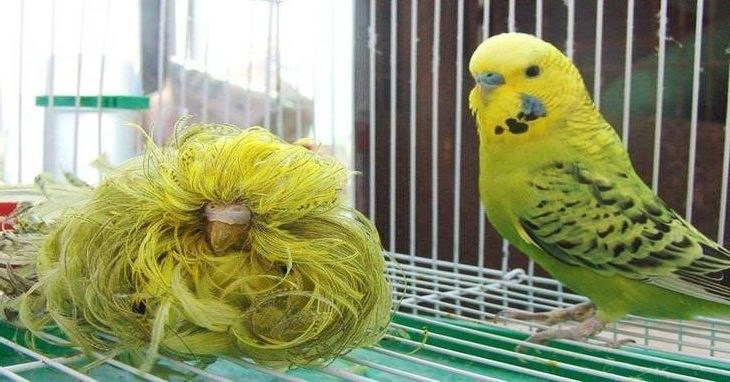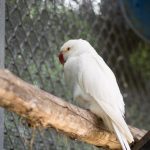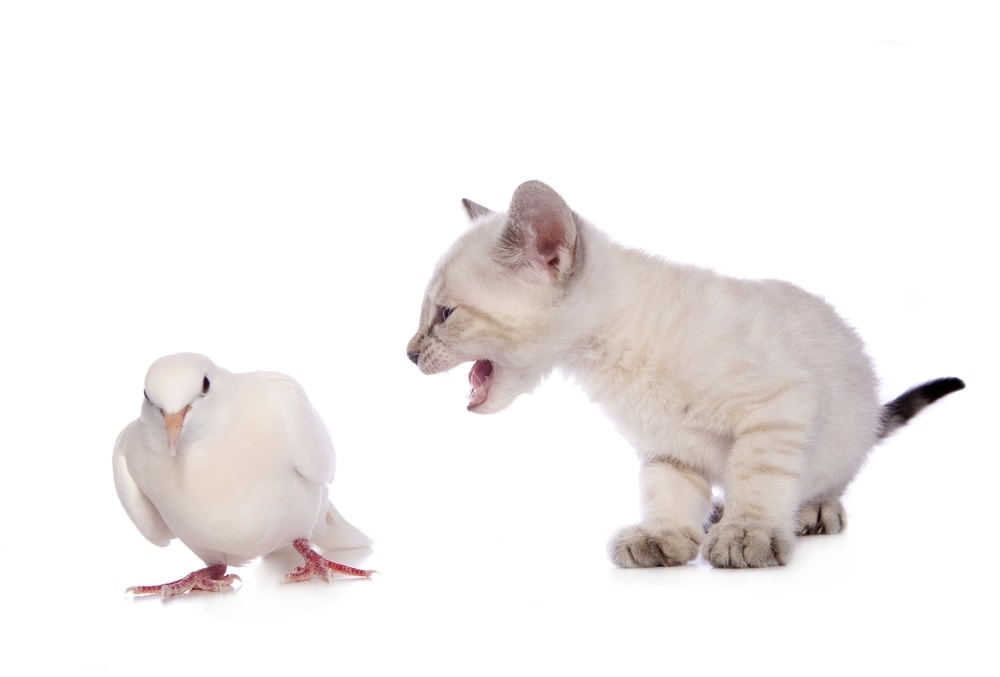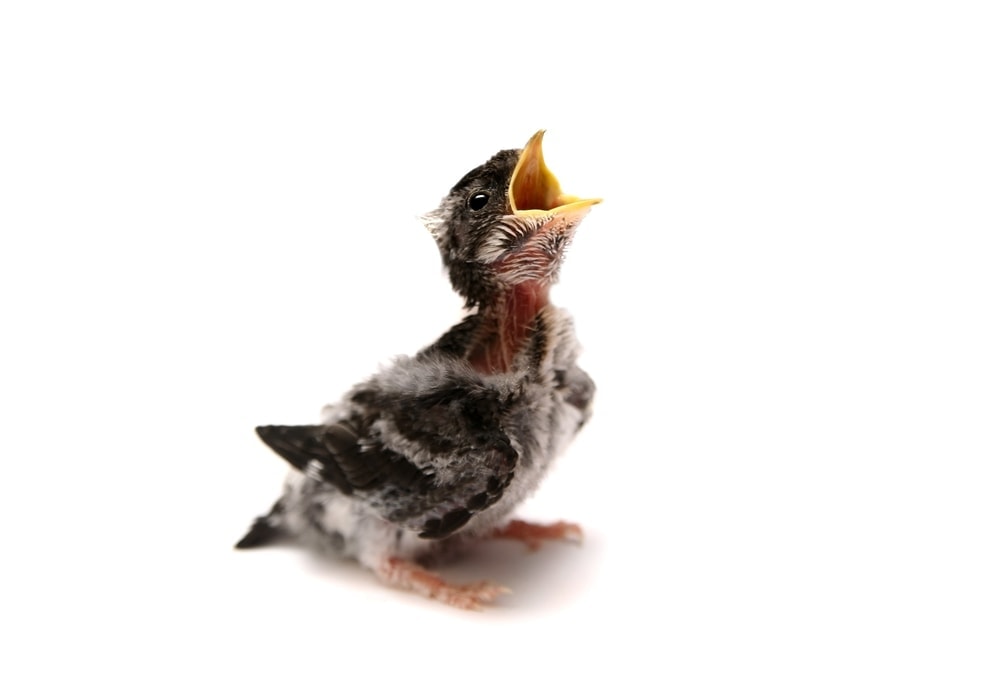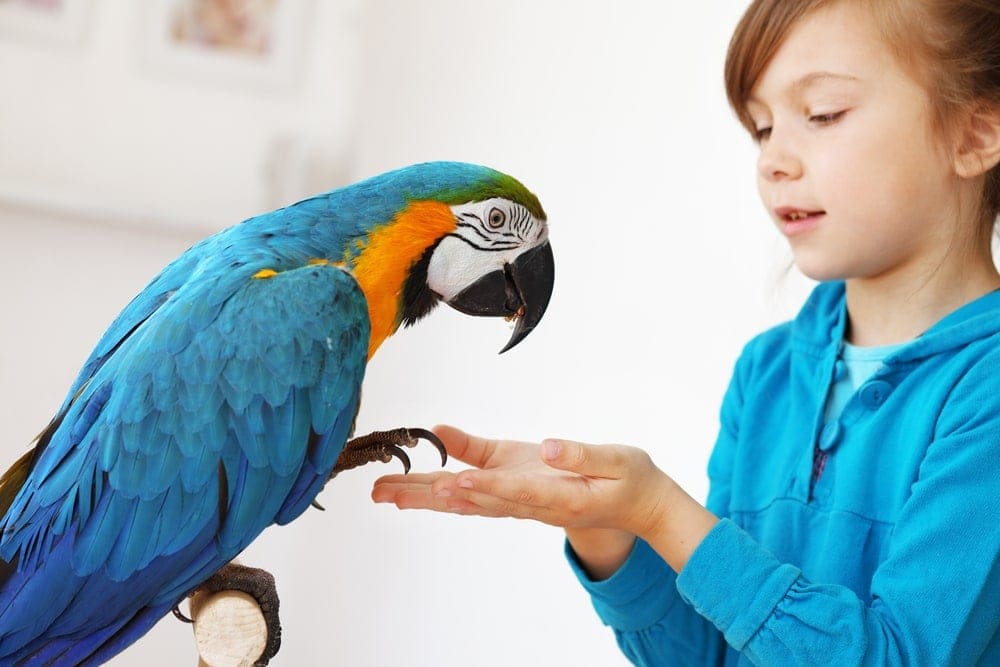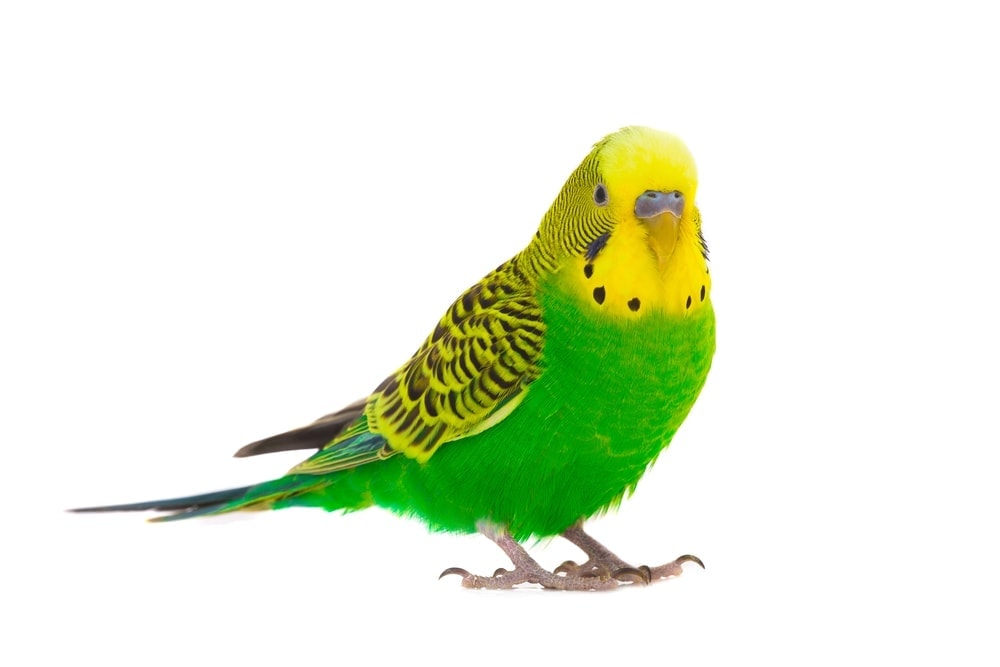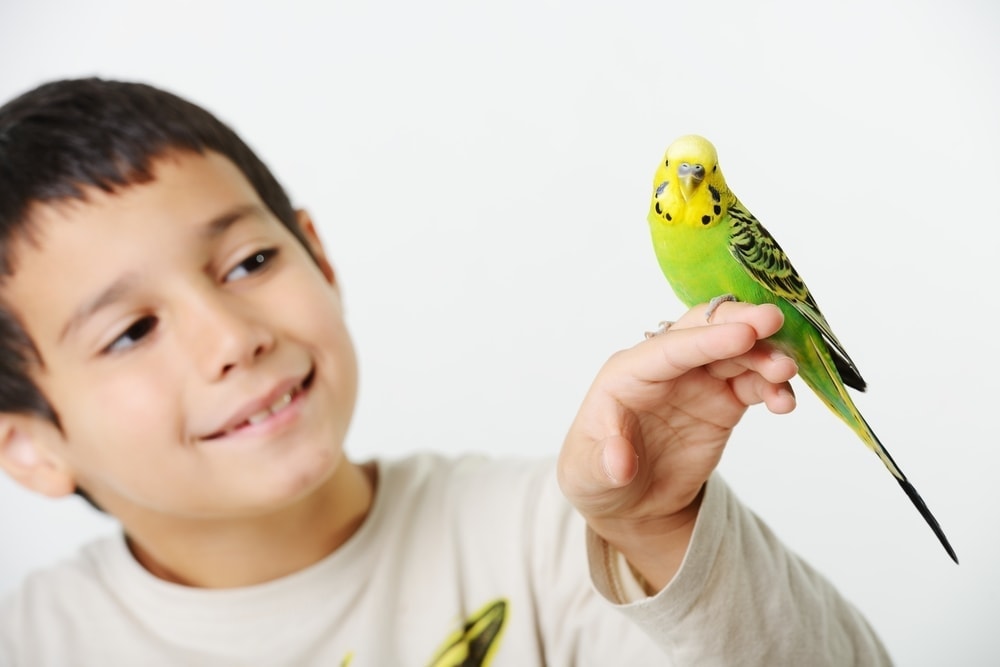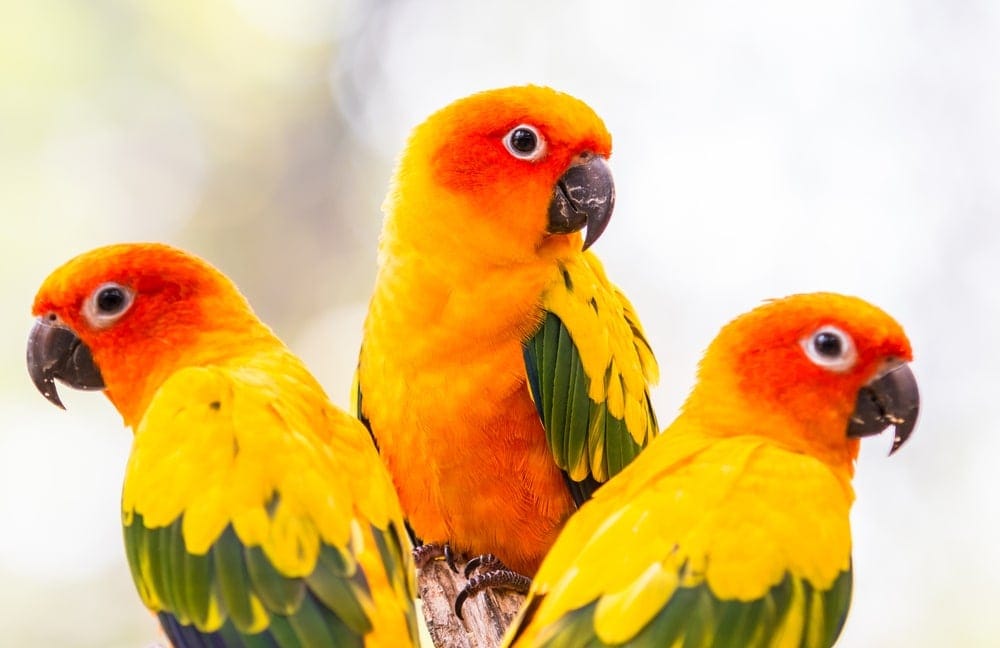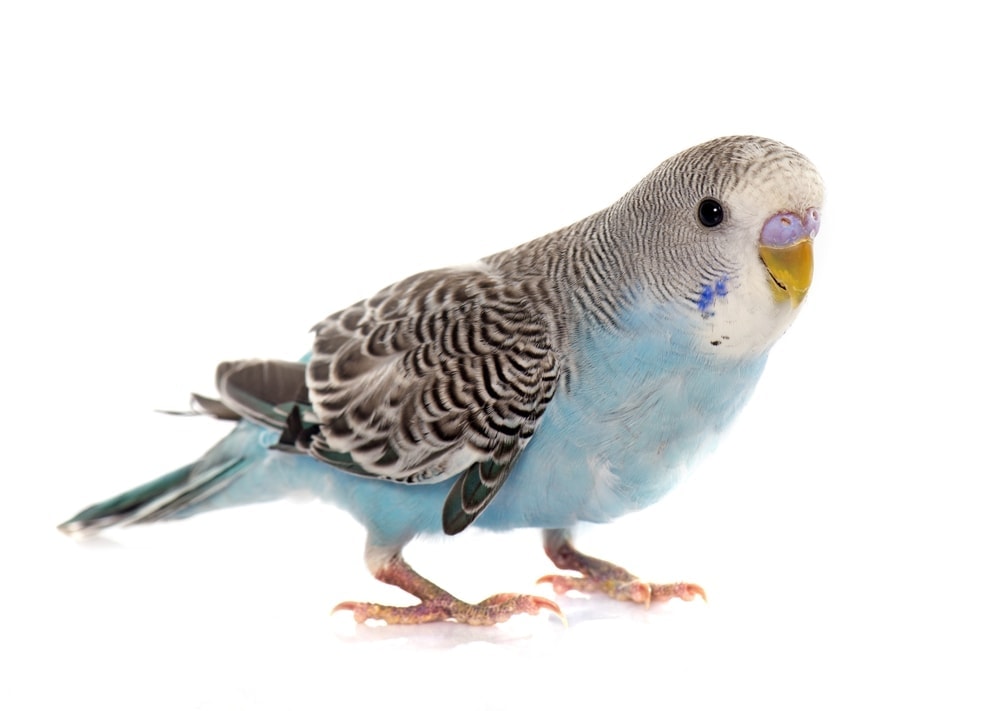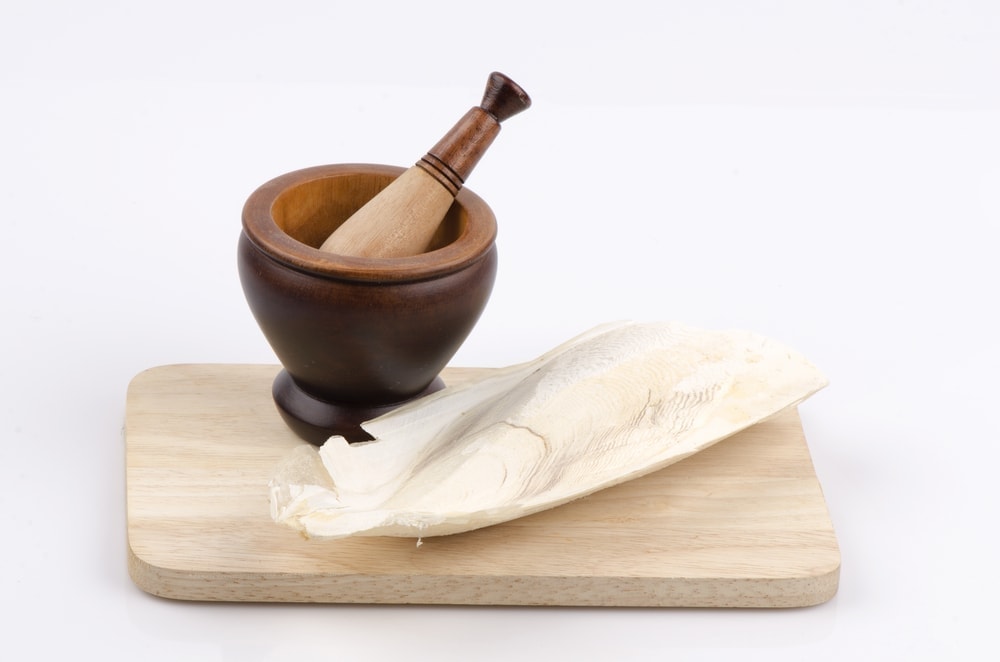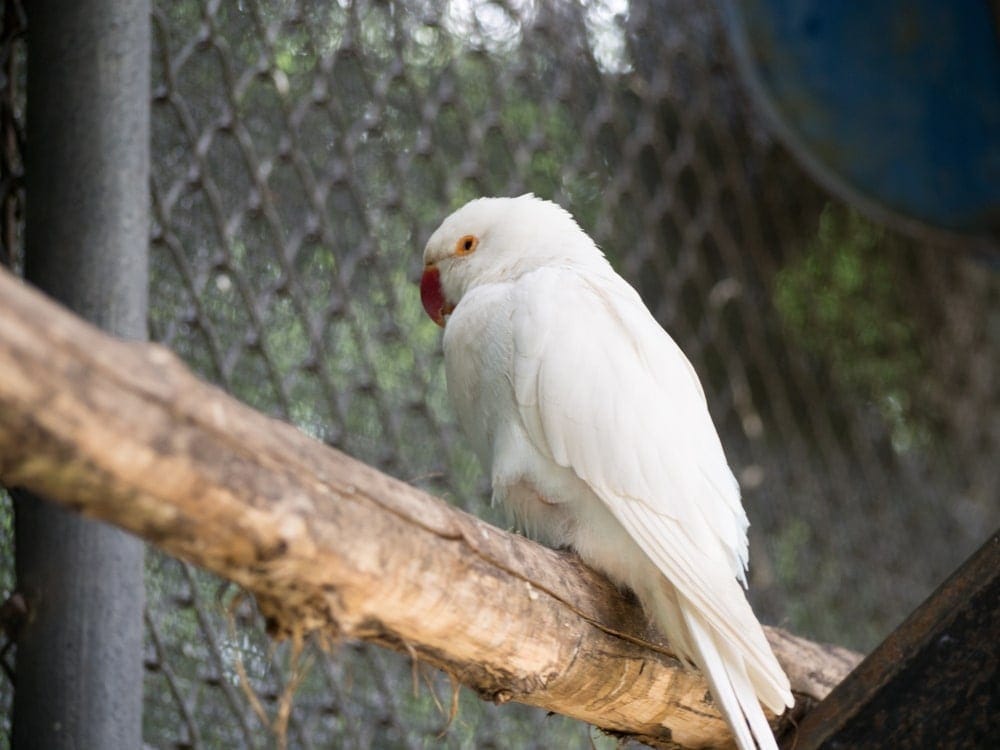Budgerigars are among the most popular pet birds in the world, and there are a number of mutations.
The Feather Duster budgie is a very rare mutation that is quite fascinating for a number of reasons.
If you are thinking about getting your own budgie, you’ll definitely be interested in this type.
What Causes the Feather Duster Mutation?
The Feather Duster budgie’s mutation is caused by a condition called chrysanthemum feathering. It causes the flight, tail and contour feathers to continue growing. Birds that have this particular mutation don’t possess the barbules to interlock their feathers, which leads to massive overgrowth.
Avian researchers believe that this mutation is the result of a recessive gene. Both of the birds need to have the gene for this mutation and pass it on to their offspring. It is sometimes called “Budgie Down Syndrome” due to some of the similarities with the human condition.
This bird’s shaft or calamus has an unusually curved shape, which causes their feathers to puff out in an amusing display. In the wild, these birds usually don’t last more than a year. Most of them can’t even fly on their own. This makes it extremely difficult for them to survive.
It is impossible to identify which budgies will have the feather duster mutation at the time of their birth. It is only until they get a bit older that this condition becomes obvious. When their feathers begin to grow, they simply do not stop.
First Reported Case of Feather Duster Mutation
The very first case of a Feather Duster budgie was recorded back in 1966. This bird was the offspring of two normal English budgies that were used in shows.
These are actually the only budgies that are capable of making one with this mutation.
Life Expectancy
As we mentioned above, Feather Duster budgies tend to not live very long. Even in captivity, these birds don’t live longer than a year or two at the most.
Caring for a Feather Duster Budgie
There is no question that caring for a budgie with the feather duster mutation can be difficult. It is a major challenge that not many people are willing to take on. If you want to get one of these birds, you will need to know everything you can about caring for it.
Diet
Some researchers believe that it is possible for feather dusters to live longer if they are put on the right diet. The problem is that nobody really knows what the ideal diet for these particular birds is.
The best thing you can do is to give your budgie a combination of high quality pellets and seeds, as well as various fruits and vegetables. These birds eat a lot of berries and vegetation in the wild, so you should incorporate these foods into its diet.
You definitely want to avoid giving your feather duster budgie only seeds, as this diet is too high in fat. They need a balanced diet that is loaded with all sorts of nutrients. Millet seed is particularly ideal for these birds, as it is very nutritious as a whole.
A pellet mix that is formulated specially for budgerigars is the best choice for this bird. There are lots of commercial mixes that you have to choose from, but you need to do your research. The more time you spend exploring these options, the more likely you are to extend the bird’s life beyond a few months. Pellets should ideally make up a vast majority of your budgie’s daily diet.
Environment
When you are shopping for a cage to put your feather duster budgie in, you should get one that measures at least 18 inches wide by 24 inches tall by 18 inches deep. Most budgies need to be kept in a cage with bars that are no more than half an inch apart. With feather dusters, bar spacing is less of an issue due to their feather growth.
The older a feather duster budgie gets, the harder it is for them to stand on a perch. You should, however, make a point of keeping a perch or two in their cage. This will help with keeping their nails trimmed.
Grooming
Grooming is definitely one of the more important aspects of caring for a feather duster budgie. You need to make a point of getting their feathers trimmed often. Keep in mind that the feathers on this bird will not stop growing. This means that you need to be very diligent with getting them trimmed up.
The feathers on this bird tend to cover their face and eyes when they get too long, which makes proper grooming all the more important. If you do not make a point of taking them to a groomer or a vet for trimming, they won’t even be able to see properly.
Common Health Problems
Many feather duster budgies have certain defects like microphthalmia, which causes one eye to be smaller than the other. In some cases, both eyes are significantly smaller than normal. This is just one of the many health problems these birds tend to develop as they get older.
Conclusion
- Feather Duster budgies have a condition known as chrysanthemum feathering, which means their feathers don’t stop growing.
- This mutation results from two birds that carry the feather duster gene mating.
- These birds are characterized by their overgrown and puffy feathers.
- The average life expectancy of a feather duster budgie is around two to twelve months.
- It may be possible to extend the life of this bird with a special, highly nutritious diet.
- It is important that you give this bird a diet that consists mostly of high-quality pellets.
- You can also give them fruits, vegetables, and certain seeds on occasion.
- This bird needs a decent-sized cage, but bar spacing isn’t important like with most normal budgies.
- Feather dusters typically have problems sitting on a perch and can rarely fly.
- It can be very difficult to care for this variety of budgie, and they are hard to find on the open market.
